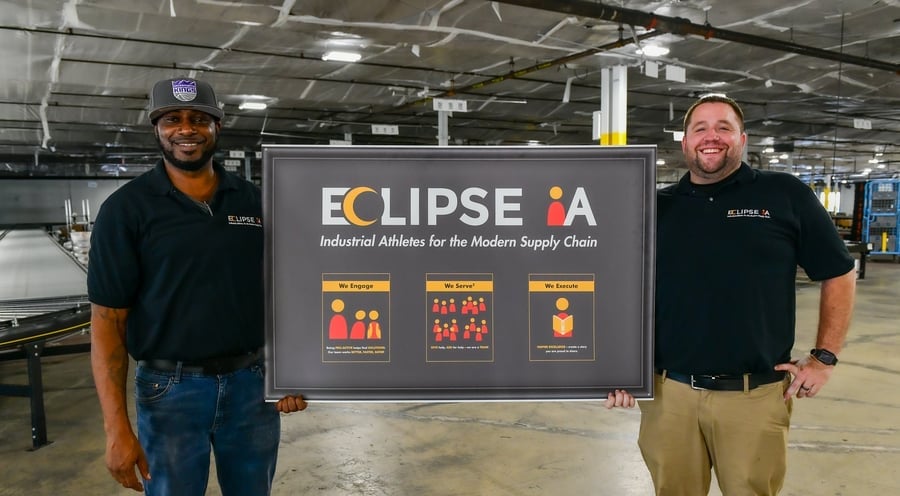
At Eclipse IA, we refer to our associates as Industrial Athletes (IAs). The term was originally coined by a customer, who was commenting on how productive our associates were. He felt that their outstanding, hard-working performance earned them the title of athlete – an Industrial Athlete. Our leaders loved the term and decided to adapt it as the official title for the members of our workforce population, the people on the floor doing intensive, athletic work, day in and day out.
Who is the Industrial Athlete?
“An Industrial Athlete is a trained, motivated, safe and productive individual in a warehouse environment,” says Tim Neal, Eclipse IA VP of Operations. “As different from an hourly warehouse associate, they are on a team-based productivity model, where working together and leveraging the skills that they and their teammates have can drive a higher deliverable when it comes to productivity and consistency in an everyday operation.”
What is the Cost Per Unit (CPU) Model?
In our Managed Cost Per Unit (CPU) model, all members of a team (the IAs) are paid equally based on the overall performance and productivity as a whole. The team typically has specific productivity goals to meet, such as number of trucks unloaded or containers unpacked.
“The pay pool model creates a different team environment,” says Neal. “The understanding is that when a new employee joins the team, it is in their best interest for that new hire to become as productive and efficient as possible because that new person (IA) is a part of the same pay pool.”
This unique dynamic encourages the more experienced IAs to step up and play a “coaching role” for newer IAs. “The leads and tenured IAs in a warehouse know the job function and how to be the most efficient at it, better than any playbook can explain,” continues Neal. “Having them as the real, front-line trainers on the job functions and the tips and tricks is really what drives productivity.”
Because the entire team is incentivized to work collectively to achieve the productivity goal, those leads and experienced IAs are naturally motivated to help new or struggling team members to learn how they can perform their best. “In a tenured pay pool environment, there’s a lot more self-management that goes on because the team continues to drive for that most efficient, most effective environment, because that means a higher pay pool for everybody,” explains Neal.
There’s no “I” in team, but there are individual benefits
While many new IAs are excited by the productivity team pay model, there are cases where they are initially wary of the concept. “When we take over an operation that is based on hourly pay or even individual pay, getting the team to understand the benefits of the pay model is really one of the key points we focus on right out of the gate,” says Neal.
One of those key benefits? In converting dozens of distribution centers from traditional pay models to team productivity pay, Eclipse has generally seen a 35% boost in wages without any increase in labor costs.
Examples are great, but sometimes it takes actual experience to convince IAs that it really works. In the words of one Ohio-based IA, “I didn’t really believe in this productivity pay, but man, I’ve never seen people move like this and we are out of here in less time than ever before.”
When teams of IAs are able to reach their goals, wages increase and/or they are able to receive a full week’s pay for a job completed in fewer than 40 hours. That’s more time they have to spend with family, friends and enjoying a healthy work-life balance. True teamwork results in efficiency, productivity and real personal benefits.
If you’re interested in finding out how you can boost warehouse productivity with our team-based CPU model or want to learn more about becoming an Eclipse Industrial Athlete, reach out to us today!
This is part two in a seven-part series. You can read all of the posts in the series here.
Related Articles
How To Implement a Productivity Pay Model for Greater Returns
Benefits of a Productivity Team-Based Pay Model in Your Warehouse